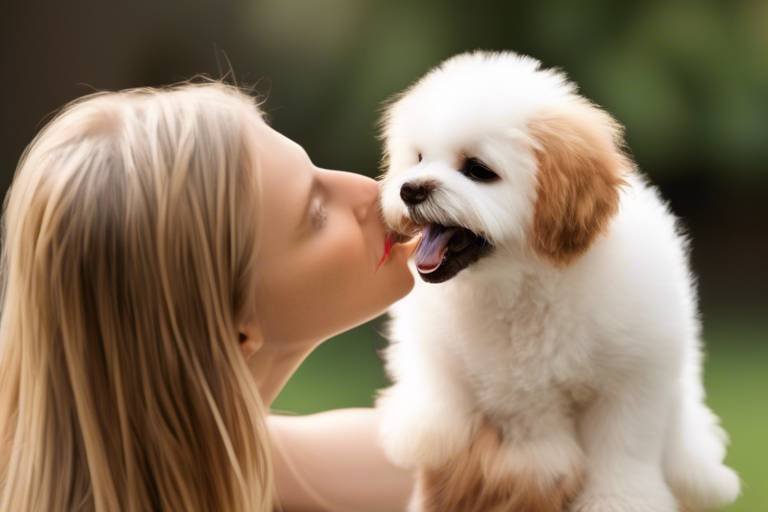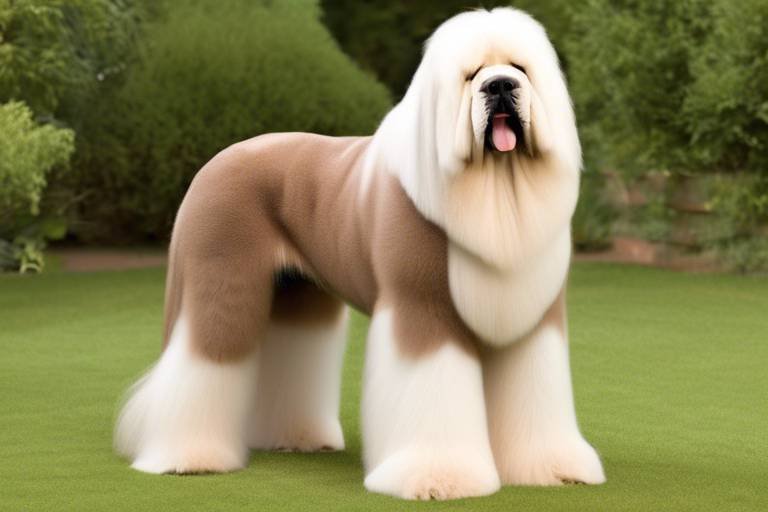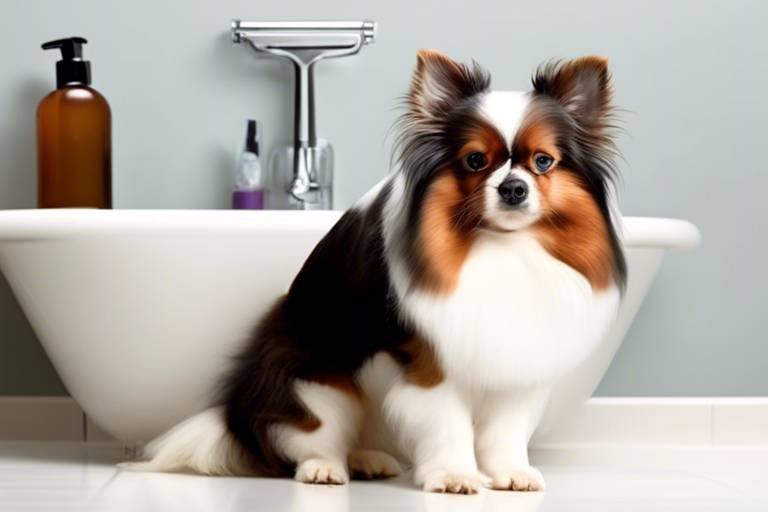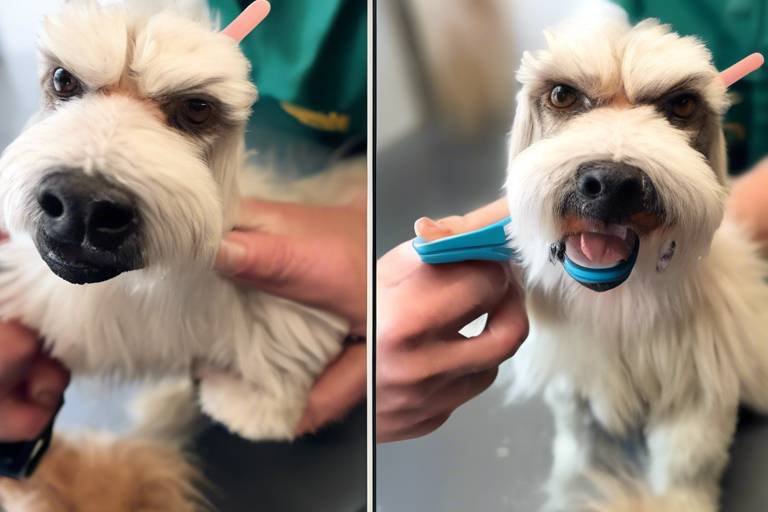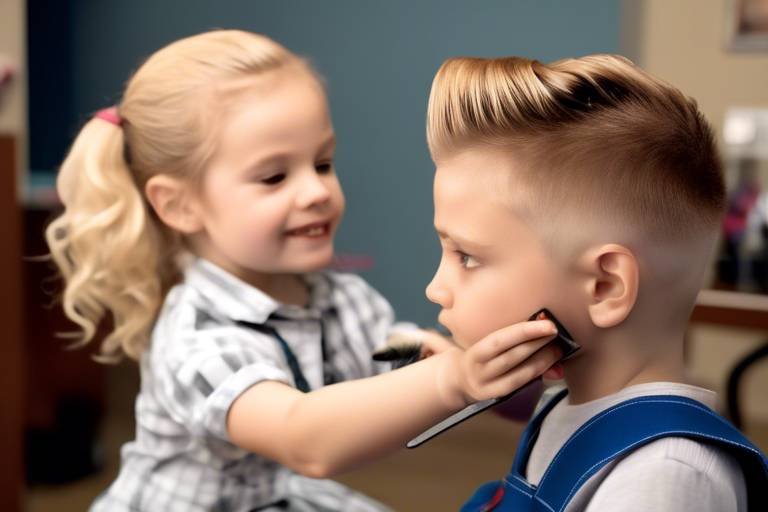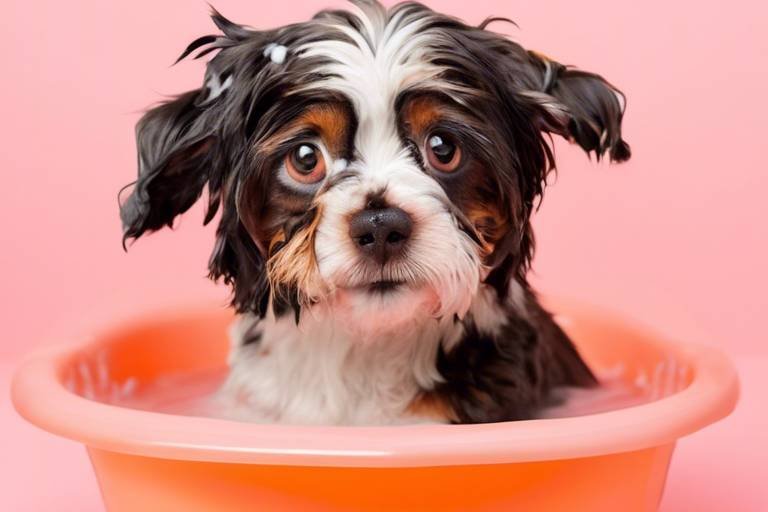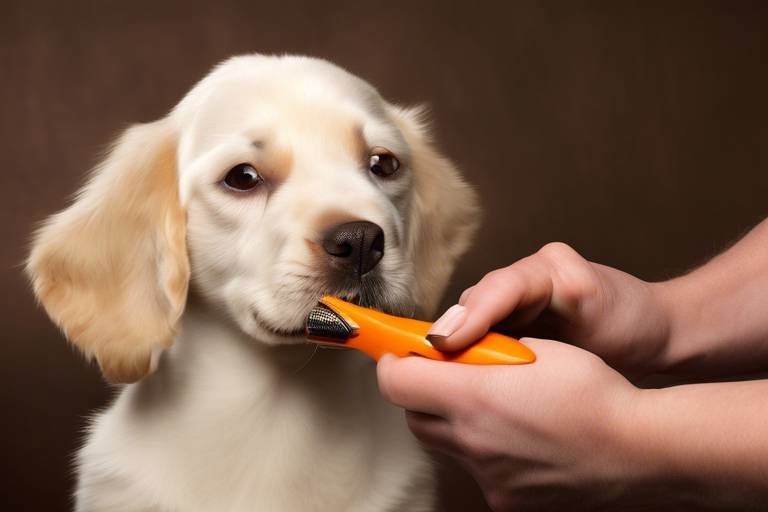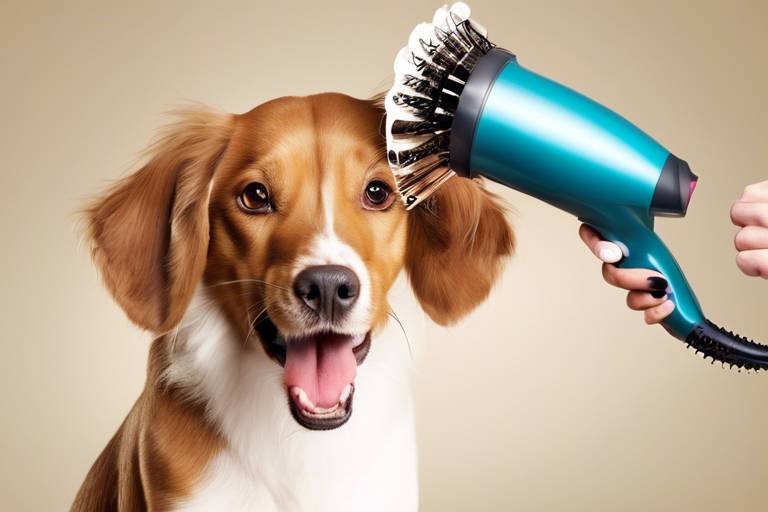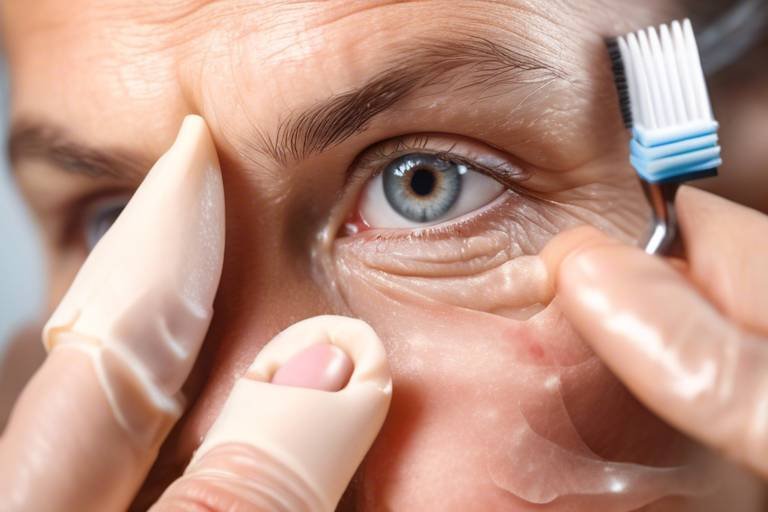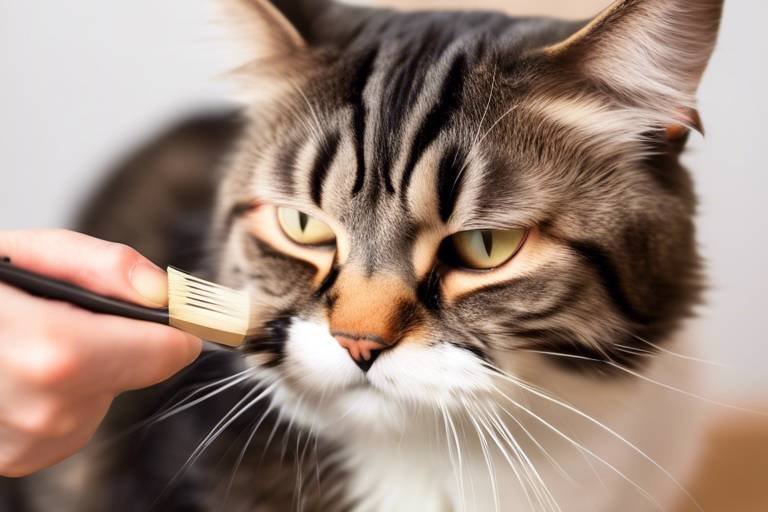The Role of Grooming in Pet Bonding
Grooming is much more than just a routine task; it’s a vital part of the relationship between pets and their owners. Imagine this: every time you brush your dog’s fur or bathe your cat, you’re not only keeping them clean but also deepening the bond that you share. This connection is built through the simple acts of care and attention that grooming provides. It’s a time when you can both relax, enjoy each other’s company, and strengthen your relationship. Through grooming, we communicate love and trust, which are essential elements in any relationship.
When we think about grooming, we often focus on the physical benefits for our pets, such as a shiny coat or reduced shedding. However, the emotional benefits are equally significant. Regular grooming sessions can help alleviate anxiety in pets, making them feel more secure and loved. This is especially true for pets that may have experienced trauma or neglect in their past. By establishing a routine, you create a safe space where they can thrive, knowing that they are cared for. The gentle strokes of a brush or the soothing sound of running water during a bath can be incredibly reassuring.
Moreover, grooming can be a fantastic way to teach pets about trust and patience. As you handle them during these sessions, you’re helping them learn to accept touch and become comfortable with being handled. This is crucial, especially for young pets or those who are new to your home. Through consistent grooming, they learn that your touch is gentle and that they can rely on you. Just like how a child learns to trust their parent through care and attention, pets learn the same through grooming.
Additionally, grooming can serve as a fun bonding activity. Picture this: you and your furry friend snuggled up on the couch, a brush in hand, and treats at the ready. It’s not just about cleanliness; it’s about creating memories together. You can even turn grooming into a game by incorporating playtime with toys or treats as rewards for good behavior. This transforms grooming from a chore into an enjoyable experience that both you and your pet will look forward to.
In essence, grooming plays a pivotal role in enhancing the bond between pets and their owners. It’s a multifaceted activity that encompasses physical care, emotional support, and shared experiences. So next time you pick up that brush or prepare the bath, remember that you’re not just grooming your pet; you’re also nurturing a relationship that is built on trust, love, and companionship. Let grooming be a celebration of your unique bond, a time to connect and grow together.
- How often should I groom my pet? The frequency of grooming depends on the type of pet and its coat. Long-haired breeds may require daily grooming, while short-haired pets might need it once a week.
- Can grooming help with my pet's anxiety? Yes! Regular grooming can provide comfort and reassurance to pets, helping to alleviate anxiety and build trust.
- What are the best tools for grooming? The tools vary by coat type, but common items include brushes, combs, nail clippers, and pet-friendly shampoos.
- How can I make grooming enjoyable for my pet? Use positive reinforcement such as treats and praise, and keep the sessions short and fun to enhance their experience.
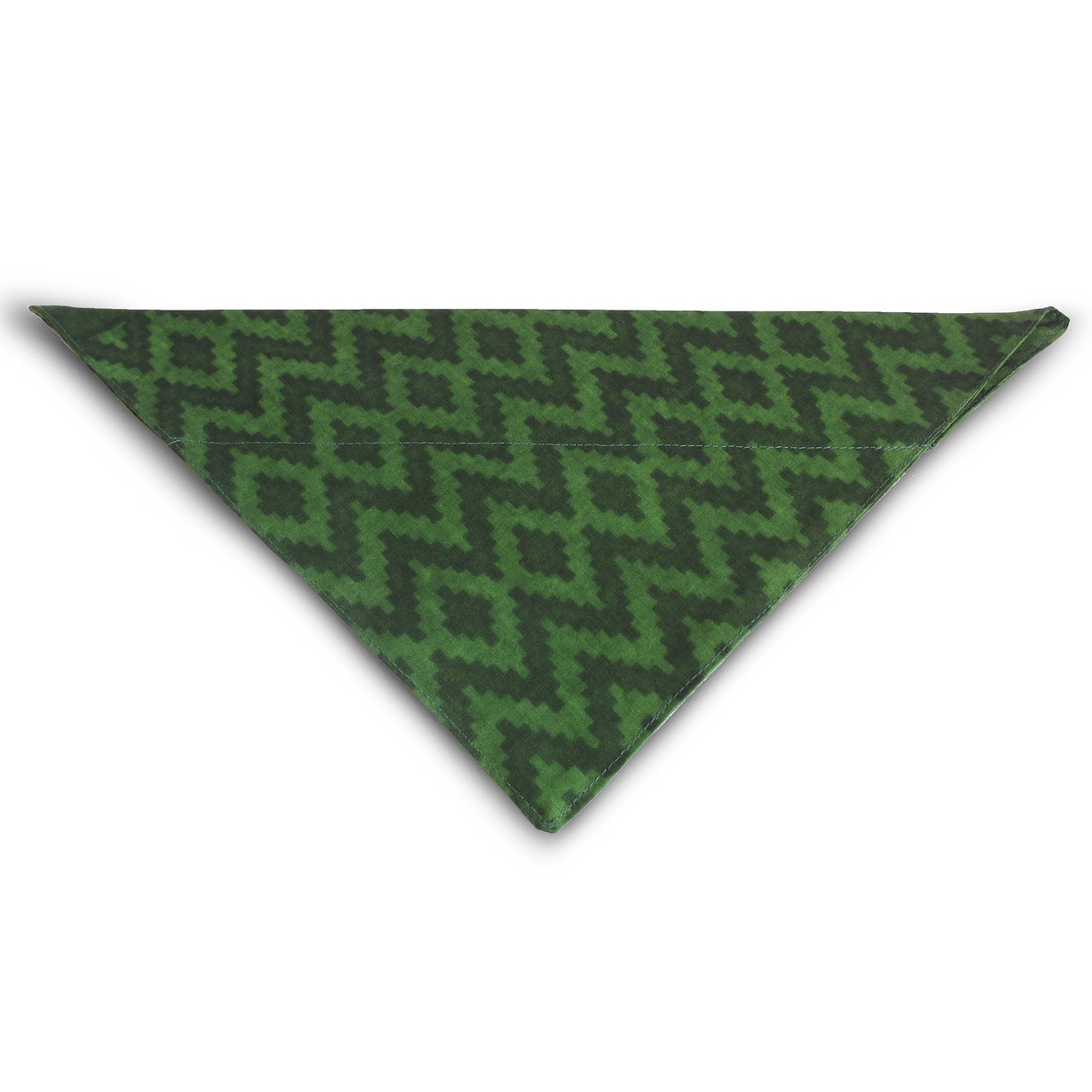
The Importance of Grooming
Grooming is not just a luxury for pets; it is essential for their overall health and well-being. Think of grooming as a form of preventive care that helps to keep your furry friend happy and healthy. Regular grooming sessions can significantly reduce the risk of skin problems, matting, and even infections. Just like humans need regular check-ups and hygiene practices, pets require the same level of care to thrive.
One of the primary benefits of grooming is maintaining cleanliness. Pets can accumulate dirt, debris, and even parasites in their fur, which can lead to uncomfortable skin conditions. By grooming your pet regularly, you not only keep their coat clean but also allow for better air circulation to their skin, reducing the likelihood of irritations. Additionally, grooming helps to distribute natural oils throughout their coat, resulting in a shiny and healthy appearance.
Moreover, grooming serves as a wonderful bonding activity between pets and their owners. It provides a unique opportunity to spend quality time together, fostering trust and affection. Imagine how much your pet enjoys those gentle strokes and loving words during a grooming session! This shared experience not only strengthens your relationship but also instills a sense of security in your pet.
Incorporating grooming into your pet care routine can also have emotional benefits. Regular grooming sessions can help reduce anxiety in pets, making them feel more comfortable and secure. The routine of grooming can be soothing, much like how a warm bath can relax a human after a long day. This emotional connection through grooming is vital, especially for pets that may have experienced trauma or neglect in the past.
To sum it up, the importance of grooming extends beyond mere aesthetics. It is a holistic approach to pet care that encompasses health, hygiene, and emotional well-being. By making grooming a regular part of your pet's life, you are investing in their happiness and health. Remember, a well-groomed pet is a happy pet!
- How often should I groom my pet? - The frequency depends on the type of pet and their coat. Long-haired breeds may require daily grooming, while short-haired pets may only need grooming once a week.
- What tools do I need for grooming? - Basic grooming tools include a brush, comb, nail clippers, and pet-safe shampoo. The specific tools may vary based on your pet's coat type.
- Can grooming help with shedding? - Yes! Regular grooming can help control shedding by removing loose fur and dander, making your home cleaner and more comfortable.
- What if my pet doesn't like being groomed? - Start slowly and use positive reinforcement. Gradually introduce grooming in short sessions, rewarding your pet with treats and praise to create a positive association.
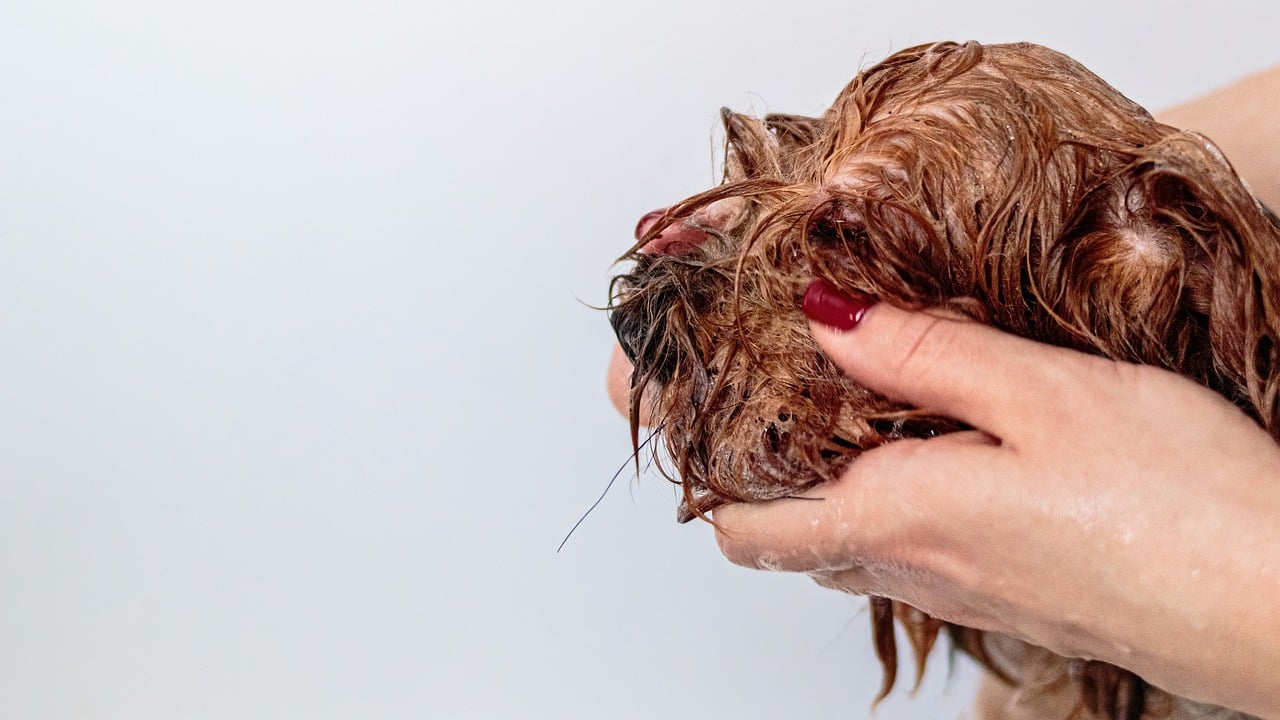
When it comes to grooming our beloved pets, understanding the various techniques tailored to different species is crucial. Each type of pet has unique grooming needs that can significantly affect their health and overall happiness. For instance, a long-haired cat requires different grooming methods compared to a short-haired dog. By familiarizing yourself with these techniques, you can ensure that your pet enjoys a comfortable grooming experience while also maintaining their hygiene.
There are several primary grooming techniques, each serving a distinct purpose. Here’s a quick overview:
| Grooming Technique | Best For | Purpose |
|---|---|---|
| Brushing | Dogs, Cats | Removes loose fur, dirt, and prevents matting |
| Bathing | Dogs, Cats, Small Animals | Removes odors and dirt, promotes skin health |
| Nail Trimming | Dogs, Cats | Prevents overgrowth and discomfort |
| Ear Cleaning | Dogs, Cats | Prevents infections and wax buildup |
Among these techniques, brushing is perhaps the most fundamental. It not only helps to remove loose fur but also dirt and debris that can accumulate in your pet's coat. Different brushes are designed for specific coat types—some are ideal for short-haired pets while others are best suited for those with long, flowing fur. Understanding which brush to use can make all the difference in maintaining a healthy, shiny coat.
Another vital grooming technique is bathing. This process is essential for keeping your pet clean and odor-free. Regular baths, depending on the breed and lifestyle, can help remove dirt and oils that accumulate on their skin. However, it’s important to use pet-specific shampoos to avoid skin irritation. Just like us, pets can have sensitive skin, and using the wrong products can lead to discomfort or allergic reactions.
Lastly, nail trimming and ear cleaning are equally important aspects of grooming that shouldn't be overlooked. Regular nail trims prevent overgrowth, which can cause pain and mobility issues for your pet. Meanwhile, cleaning their ears helps to prevent infections that can arise from wax buildup or moisture retention. These tasks may seem minor, but they contribute significantly to your pet's overall well-being.
In summary, understanding the various types of grooming techniques is essential for any pet owner. Not only do these practices promote hygiene and health, but they also enhance the bond between you and your furry friend. By investing time in learning the right methods, you can ensure that grooming becomes a positive experience for both you and your pet.
Brushing your pet is not just about keeping them looking fabulous; it's a crucial part of their grooming routine that can significantly impact their overall health and happiness. Think of brushing as a mini-massage that helps remove loose fur, dirt, and debris while also stimulating the skin and promoting blood circulation. Different pets have different needs, so understanding the right brushing techniques for your furry friend is essential. For instance, long-haired breeds may require more frequent brushing to prevent tangles and mats, while short-haired breeds might need less but still benefit from regular grooming.
When it comes to choosing the right brush, it's important to consider the type of coat your pet has. Here’s a quick overview of popular brush types:
| Brush Type | Best For | Purpose |
|---|---|---|
| Pin Brush | Long-haired breeds | Detangling and smoothing |
| Slicker Brush | Curly or wiry coats | Removing mats and loose fur |
| Bristle Brush | Short-haired breeds | Distributing natural oils |
| Rubber Brush | All coat types | Gentle grooming and massage |
Establishing a brushing routine can be a game-changer for both you and your pet. Not only does it keep their coat looking shiny and healthy, but it also allows you to check for any unusual signs such as bumps or skin irritations. So, how often should you brush? It really depends on your pet's coat type:
- Long-haired pets: Daily brushing is ideal to prevent tangles.
- Medium-haired pets: A few times a week should suffice.
- Short-haired pets: Once a week is generally enough.
But remember, the goal is to make brushing a positive experience! Start slow, and use gentle strokes to avoid causing any discomfort. If your pet seems anxious, try brushing for shorter periods and gradually increase the time as they become more comfortable. Incorporating treats and praise can also help create a positive association with grooming. After all, who doesn’t love a little reward for being a good boy or girl?
In summary, brushing is not merely a chore; it’s an opportunity to bond with your pet while ensuring they remain healthy and happy. By understanding the right techniques and tools, you can transform grooming from a mundane task into a delightful experience for both of you. So grab that brush, and let the bonding begin!
Q: How often should I brush my pet?
A: It depends on the coat type. Long-haired pets may need daily brushing, while short-haired pets can usually be brushed once a week.
Q: What type of brush is best for my pet?
A: It varies based on their coat type. Pin brushes are great for long-haired pets, while slicker brushes work well for curly coats. Short-haired pets benefit from bristle brushes.
Q: How can I make brushing more enjoyable for my pet?
A: Start with gentle strokes, use positive reinforcement like treats, and keep grooming sessions short and fun to help your pet associate brushing with a positive experience.
Establishing a regular brushing schedule for your pet is not just about maintaining a clean coat; it's an essential part of nurturing the bond between you and your furry friend. Think of brushing as a ritual—a special time set aside just for the two of you. When you make brushing a routine, it becomes a shared experience that both you and your pet can look forward to. Imagine the joy of your dog or cat eagerly awaiting their grooming session, tail wagging or purring in anticipation. This excitement is a clear sign that they associate these moments with love and care.
But how often should you brush your pet? The frequency can vary depending on several factors, including the type of pet, their coat length, and their individual grooming needs. For instance:
| Pet Type | Coat Length | Recommended Brushing Frequency |
|---|---|---|
| Dogs | Short | Once a week |
| Dogs | Medium | 2-3 times a week |
| Dogs | Long | Daily |
| Cats | Short | Once a week |
| Cats | Medium/Long | 2-3 times a week |
By sticking to a consistent brushing schedule, you not only keep your pet's coat looking healthy and shiny, but you also create a routine that reinforces your bond. This routine can be particularly beneficial for pets that may be anxious or shy. The predictability of regular grooming can help them feel more secure, knowing they can count on you for that extra bit of attention and care.
Moreover, during these brushing sessions, you have the perfect opportunity to check for any skin issues or abnormalities. Regularly brushing your pet allows you to spot problems early, which can lead to better health outcomes. It's like a mini health check-up that you can perform right in your living room. Just think of it as a way to show your pet that you not only care about how they look but also about their overall well-being.
To make the most of your brushing sessions, consider pairing them with some gentle playtime or treats afterward. This way, your pet will associate grooming with positive experiences, making it easier for you to maintain this important routine. Remember, the goal is to create a bonding experience that both you and your pet cherish. So grab that brush, set a schedule, and watch your relationship flourish!
Brushing your pet can be a delightful experience, but it’s essential to approach it with the right mindset and tools. First and foremost, choose the right brush for your pet's coat type. For instance, if your furry friend has a long, flowing coat, a slicker brush might be your best bet, while short-haired pets often do well with a bristle brush. Not only does using the correct brush make the job easier, but it also ensures that your pet enjoys the process rather than dreads it.
Next, consider the timing of your grooming sessions. Pick a time when your pet is calm and relaxed, perhaps after a walk or playtime. This way, they are less likely to be fidgety or anxious. It’s also a good idea to incorporate brushing into a routine. For example, setting aside a few minutes every day or every other day can help your pet become accustomed to the process, making it feel like a normal part of their day.
While brushing, use gentle strokes and avoid tugging on any tangles. If you encounter a knot, take your time to work it out gently. Remember, patience is key! You might even want to use a detangling spray to help ease the process. Additionally, positive reinforcement goes a long way. Offer treats or verbal praise during and after brushing sessions. This not only rewards your pet for their good behavior but also helps them associate grooming with positive experiences.
Another tip is to keep the environment calm. Choose a quiet space, free from distractions, where both you and your pet can focus on the grooming task. Playing soft music or talking to your pet in a soothing voice can help create a tranquil atmosphere. If your pet seems particularly anxious, consider breaking the grooming session into shorter intervals. This way, you can gradually build their comfort level without overwhelming them.
Lastly, be observant during brushing. Look for signs of discomfort or irritation, such as flinching or trying to escape. If you notice any skin issues, it’s wise to consult a veterinarian before proceeding with regular grooming. Your pet's health is paramount, and being attentive during these sessions can help you catch potential issues early.
- How often should I brush my pet? It largely depends on your pet's coat type. Long-haired pets generally require daily brushing, while short-haired pets may only need it once a week.
- What if my pet doesn't like being brushed? Start slowly, use treats, and create a positive environment. Gradually increase the time spent brushing, and they may come to enjoy it.
- Can I use human brushes on my pet? It's best to use brushes specifically designed for pets, as they are tailored to their unique coat types and skin sensitivities.
This article explores how grooming fosters a deeper connection between pets and their owners, enhancing trust and affection through regular care and attention.
Grooming is essential for a pet's health and well-being. Regular grooming helps maintain cleanliness and prevents skin issues, while also serving as a bonding activity for pets and their owners.
There are various grooming techniques tailored to different pet types. Understanding these methods helps owners choose the best practices for their pets, ensuring comfort and satisfaction during the grooming process.
Brushing is a fundamental grooming technique that removes loose fur and dirt. Different brushes serve specific purposes, catering to various coat types and helping to maintain a healthy, shiny coat.
Establishing a regular brushing schedule is crucial for both pet and owner. It not only keeps the coat in top condition but also strengthens the bond through shared time and attention.
Using the right tools and techniques can make brushing more enjoyable for pets. Gentle strokes and positive reinforcement can turn grooming into a pleasurable experience for both parties.
Bathing is another vital aspect of grooming that contributes to a pet's overall health. Think of it as a refreshing spa day for your furry friend! Regular baths help remove dirt, odors, and allergens that can accumulate in their fur and skin. Not only does this promote a clean and pleasant environment for both pet and owner, but it also plays a significant role in preventing skin irritations and infections.
When bathing your pet, it’s essential to use products specifically designed for their skin type. Human shampoos can disrupt the natural pH balance of a pet's skin, leading to dryness and irritation. Instead, opt for pet-friendly shampoos that are gentle yet effective. Here’s a quick comparison of some common bathing products:
| Product Type | Best For | Key Features |
|---|---|---|
| Shampoo | Regular Cleaning | Removes dirt and odors |
| Conditioner | Coat Moisture | Reduces tangles and adds shine |
| Dry Shampoo | Quick Freshening | No water needed; convenient for in-between baths |
Before you start, make sure to gather all your bathing supplies. Having everything at hand ensures a smooth process and minimizes stress for both you and your pet. Here are some items you might need:
- Pet shampoo
- Conditioner (if necessary)
- Towels
- Brush
- Non-slip mat for the tub
Once you’re ready, it’s all about creating a positive experience. Use lukewarm water and keep your pet calm with a soothing voice. After the bath, don’t forget to reward them with treats and praise. This not only reinforces good behavior but also strengthens the bond between you two. Remember, grooming is not just about cleanliness; it’s an opportunity to connect and show your pet that you care!
Grooming sessions provide an opportunity for pets and owners to connect. The physical touch and attention help build trust, creating a stronger emotional bond between them.
Incorporating treats and praise during grooming can enhance the experience. Positive reinforcement encourages pets to associate grooming with enjoyment, making future sessions easier and more effective.
Grooming can also serve as a social activity, allowing pets to interact with their owners in a relaxed setting. This shared experience fosters a sense of security and companionship.
Q: How often should I bathe my pet?
A: It depends on the breed and lifestyle of your pet. Generally, dogs may need a bath every month, while cats may require less frequent bathing.
Q: Can I use human shampoo on my pet?
A: No, it’s best to use shampoos specifically formulated for pets to avoid skin irritation.
Q: What if my pet hates baths?
A: Make the experience positive by using treats and praise, and consider using a dry shampoo in between baths to keep them clean.
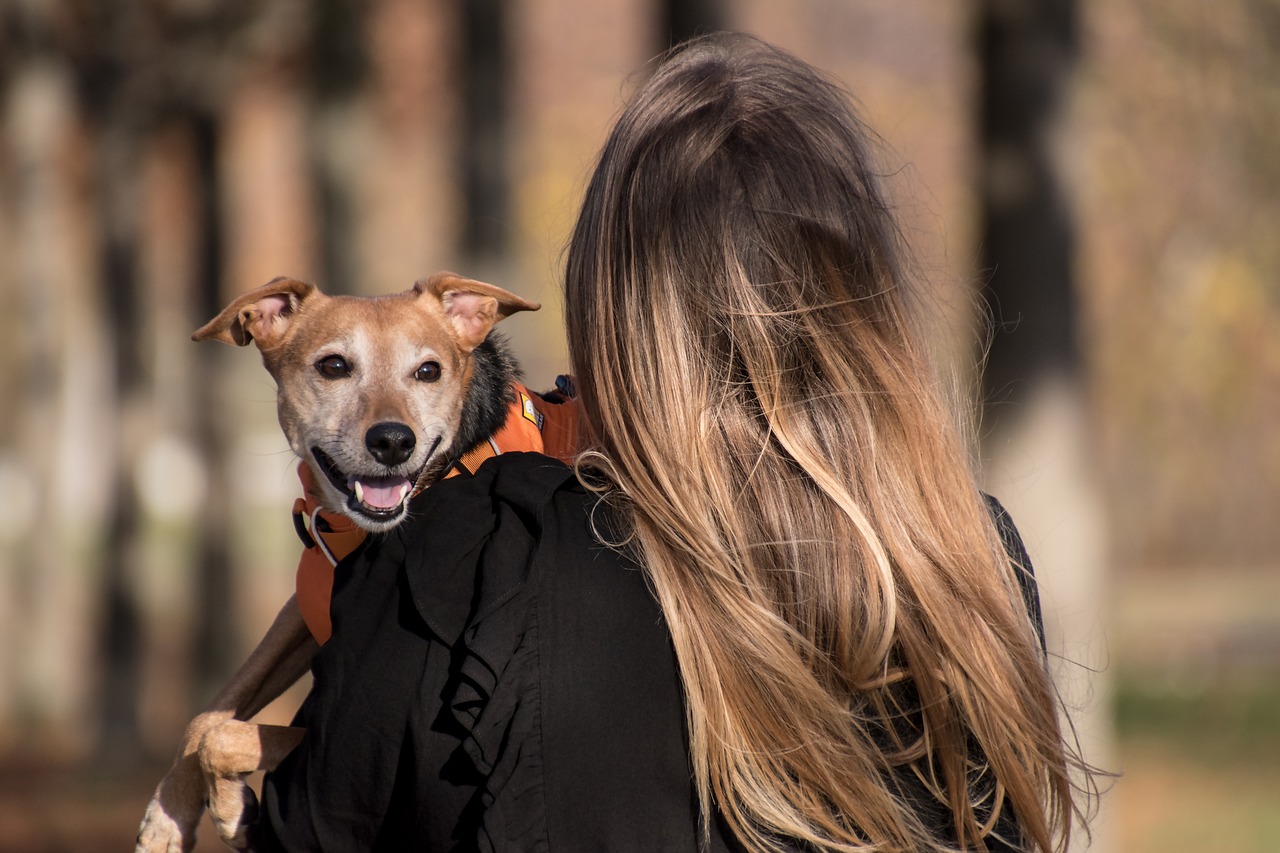
Grooming is more than just a routine task; it’s a wonderful opportunity for pet owners to build a deeper connection with their furry friends. Imagine this: you’re sitting on the floor, your pet nestled beside you, and you’re gently brushing their coat. This simple act can be a powerful way to foster trust and affection. The physical touch, the soothing strokes, and the shared time all contribute to a bond that goes beyond words. It’s like a silent conversation where both parties express love and care through their actions.
During grooming sessions, pets often relax and feel more comfortable in their owner's presence. This creates an environment where they can let their guard down, allowing for more intimate interactions. Just think about it—when you take the time to groom your pet, you're not only helping them look their best but also showing them that they are valued and cared for. It’s a win-win situation!
Furthermore, grooming can serve as a form of stress relief for both pets and owners. The rhythmic motion of brushing or bathing can be calming, making it a therapeutic experience. For pets, it can alleviate anxiety, while for owners, it can be a moment of mindfulness, away from the hustle and bustle of daily life. This shared experience can help create a sense of security and companionship that is hard to replicate in other activities.
Incorporating positive reinforcement during grooming sessions can further enhance this bonding experience. When you reward your pet with treats or praise, it encourages them to associate grooming with happiness. This not only makes the process smoother but also strengthens the emotional connection you share. It’s like creating a little ritual that both you and your pet look forward to, turning grooming into a fun activity rather than a chore.
Moreover, grooming can also be a social activity. Whether it’s a trip to the groomer or a fun DIY session at home, these moments allow pets to interact with their owners in a relaxed setting. This shared experience fosters a sense of companionship and security. You could even invite friends over for a grooming party, where pets can socialize with each other while enjoying the pampering. This not only enhances the bond between you and your pet but also promotes socialization with other animals.
Ultimately, grooming is a multifaceted activity that goes beyond hygiene. It’s about nurturing the bond between you and your pet, creating lasting memories, and building a relationship rooted in trust and love. So, the next time you pick up that brush or shampoo, remember that you’re not just grooming your pet; you’re strengthening the connection that makes your relationship truly special.
- How often should I groom my pet? The frequency depends on the breed and coat type. Long-haired breeds may need grooming several times a week, while short-haired breeds might only require it once a month.
- What tools do I need for grooming? Basic tools include brushes, combs, nail clippers, and pet-friendly shampoo. Always choose tools that are appropriate for your pet's coat type.
- Can grooming help with behavioral issues? Yes! Regular grooming can help reduce anxiety and stress in pets, which can lead to better behavior overall.
- Is it better to take my pet to a professional groomer? While professional groomers are great for specific tasks, regular at-home grooming strengthens your bond and allows you to monitor your pet's health closely.
Incorporating positive reinforcement during grooming sessions is like adding a sprinkle of magic that transforms an ordinary task into a delightful bonding experience. Imagine this: you're brushing your furry friend, and instead of feeling like a chore, it becomes a moment of joy. By offering treats and praise, you're not just rewarding good behavior; you're creating a joyful association with grooming. This simple strategy can significantly enhance the experience for both you and your pet.
When your pet receives a tasty treat or a gentle pat while you groom them, they begin to look forward to these sessions. It’s essential to choose the right moments for reinforcement. For instance, if your dog sits calmly while you brush their coat, that’s the perfect time to reward them. This reinforces the behavior and encourages them to stay relaxed during future grooming. Over time, your pet will associate grooming with positive feelings, making it easier for you to maintain their hygiene.
Here are a few tips to effectively use positive reinforcement in grooming:
- Start Small: If your pet is new to grooming, begin with short sessions. Gradually increase the time as they become more comfortable.
- Use High-Value Treats: Choose treats that your pet loves. This will make them more eager to cooperate.
- Praise Generously: Don’t underestimate the power of your voice. Cheerful words can boost your pet’s confidence and enjoyment.
Remember, the goal is to create a positive atmosphere. If your pet seems anxious or restless, take a break. This isn’t just about keeping their coat clean; it’s about nurturing a trusting relationship. As you continue to incorporate positive reinforcement into your grooming routine, you’ll notice a significant shift in your pet's behavior. They'll not only become more cooperative but will also begin to seek out these moments of connection with you.
In conclusion, positive reinforcement is a powerful tool that can transform grooming into a cherished activity. It strengthens the bond between you and your pet, turning what could be a stressful experience into one filled with trust and affection. So, the next time you grab that brush, remember to sprinkle in some love and rewards—your furry friend will thank you for it!
Q1: How often should I groom my pet?
A: The frequency of grooming depends on your pet's breed, coat type, and lifestyle. Generally, long-haired breeds require more frequent grooming than short-haired ones. Aim for at least once a week, but consult your veterinarian for specific recommendations.
Q2: What if my pet hates grooming?
A: Start slowly and use positive reinforcement. Gradually introduce grooming tools and techniques, and always reward your pet for calm behavior. If necessary, consider professional grooming services to help acclimate them.
Q3: Can grooming help with my pet's anxiety?
A: Yes! Regular grooming can provide a sense of routine and security for pets, which may help reduce anxiety. The physical touch and attention can also be soothing.
Q4: What should I do if my pet has matted fur?
A: If your pet has severe matting, it may be best to consult a professional groomer. They have the tools and expertise to safely remove mats without hurting your pet.
Grooming isn't just about keeping your pet looking sharp; it's also a fantastic way to bond with them. Think of it as a shared experience that allows both you and your furry friend to enjoy some quality time together. When you engage in grooming, you’re not only attending to their physical needs but also nurturing the emotional connection between you two. Imagine this: the gentle strokes of a brush, the soft sounds of your pet's contented sighs, and the occasional playful nudge they give you. It’s like a dance, where both partners are in sync, creating a rhythm of trust and affection.
During these grooming sessions, pets often feel more relaxed and secure, which can lead to a deeper sense of companionship. The act of grooming can serve as a form of communication, where your pet learns to trust your touch and intentions. This is especially important for pets that may have had negative experiences in the past. By making grooming a positive and enjoyable activity, you help them associate it with love and care.
Moreover, grooming can also be a social activity that extends beyond just you and your pet. Consider inviting friends or family over for a grooming day, where everyone can bring their pets along. This not only creates a fun atmosphere but also allows pets to socialize with each other, enhancing their comfort level around other animals. You could even set up a little grooming station with various tools and treats, turning it into a mini pet spa day!
In addition to the physical benefits, grooming can also be a great conversation starter among pet owners. Sharing tips on grooming techniques or discussing the quirks of your pets can lead to deeper connections with fellow pet lovers. It’s a fantastic way to build a community, where everyone shares their love for animals and learns from one another.
So, the next time you grab that brush or prepare the bathtub, remember that you’re not just grooming your pet; you’re also enhancing your bond and creating lasting memories. Grooming can be a delightful ritual that transforms into a cherished routine, one that both you and your pet look forward to. Embrace this social aspect of grooming, and watch as your relationship with your pet flourishes!
- How often should I groom my pet? The frequency of grooming depends on your pet's breed and coat type. Long-haired breeds may require daily grooming, while short-haired pets may need it weekly.
- What tools do I need for grooming? Basic grooming tools include brushes, combs, nail clippers, and pet-safe shampoo for baths.
- Can grooming help with behavioral issues? Yes! Regular grooming can help your pet become more comfortable with handling, reducing anxiety and improving their behavior.
- What if my pet doesn’t like being groomed? Start slowly and use positive reinforcement, such as treats and praise, to help them associate grooming with positive experiences.
Frequently Asked Questions
- Why is grooming important for my pet?
Grooming is essential for your pet's health and well-being. It helps maintain cleanliness, prevents skin issues, and promotes a shiny coat. Plus, it's a fantastic way to bond with your furry friend!
- How often should I groom my pet?
The frequency of grooming depends on your pet's coat type and lifestyle. Generally, brushing once a week is a good start, but long-haired pets may need daily grooming to prevent mats and tangles.
- What are the best brushing techniques for my pet?
Using the right brush is key! For short-haired pets, a bristle brush works well, while long-haired pets benefit from a slicker brush. Always use gentle strokes and be mindful of sensitive areas.
- How can I make grooming a positive experience for my pet?
Incorporate treats and praise during grooming sessions. This positive reinforcement helps your pet associate grooming with good experiences, making future sessions smoother and more enjoyable.
- Is bathing necessary for my pet?
Yes! Regular bathing helps remove dirt and odors, keeping your pet clean and comfortable. However, the frequency depends on your pet's breed and lifestyle—some may only need a bath every few months.
- Can grooming strengthen the bond between me and my pet?
Absolutely! Grooming provides a unique opportunity for physical touch and attention, which fosters trust and affection. It's like a little spa day that you both can enjoy together!
- What should I do if my pet doesn’t like grooming?
Start slowly and keep sessions short. Use treats and praise to create a positive association. If your pet continues to resist, consider consulting a professional groomer for tips or assistance.
- Are there specific grooming tools I should invest in?
Yes! Basic grooming tools include brushes, combs, nail clippers, and pet-safe shampoo. Investing in quality tools can make a big difference in the comfort and effectiveness of the grooming process.

